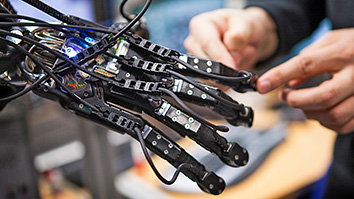Citation
Ganguly, A., Simons, J., Schneider, A., Keck, B., Bennett, N. R., & Fahrig, R. (2011). In-vitro imaging of femoral artery Nitinol stents for deformation analysis. Journal of Vascular and Interventional Radiology, 22(2), 236-243.
Abstract
Purpose
Femoral artery stents are prone to fracture, and studying their deformations could lead to a better understanding of the cause of breakage. The present study sought to develop a method of imaging and analyzing stent deformation in vitro with use of a calibrated test device.
Materials and Methods
High-resolution (approximately 200 μm) volumetric data were obtained with a flat-panel detector–based C-arm computed tomography system. A nitinol stent placed in a testing device was imaged with various loads that caused bending, axial tension, and torsion. Semiautomatic software was developed to calculate the bending, extension, and torsion from the stent images by measuring the changes in the radius of curvature, eccentricity, and angular distortions.
Results
For the axial tension case, there was generally good agreement between the physical measurements and the image-based measurements. The bending measurements had better agreement at bend angles lower than 30°. For stent torsion, the hysteresis between the loading and unloading curves were larger for the image-based results compared with physical measurements.
Conclusions
An imaging and analysis framework has been set up for the analysis of stent deformations that shows fairly good agreement between physical and image-based measurements.


